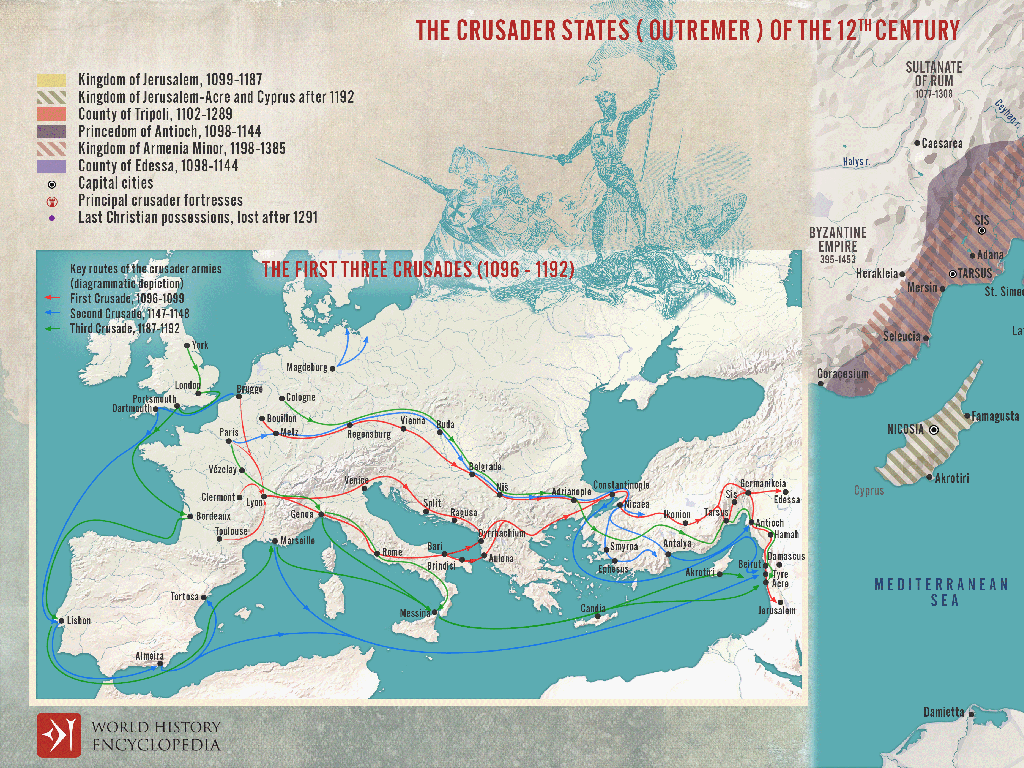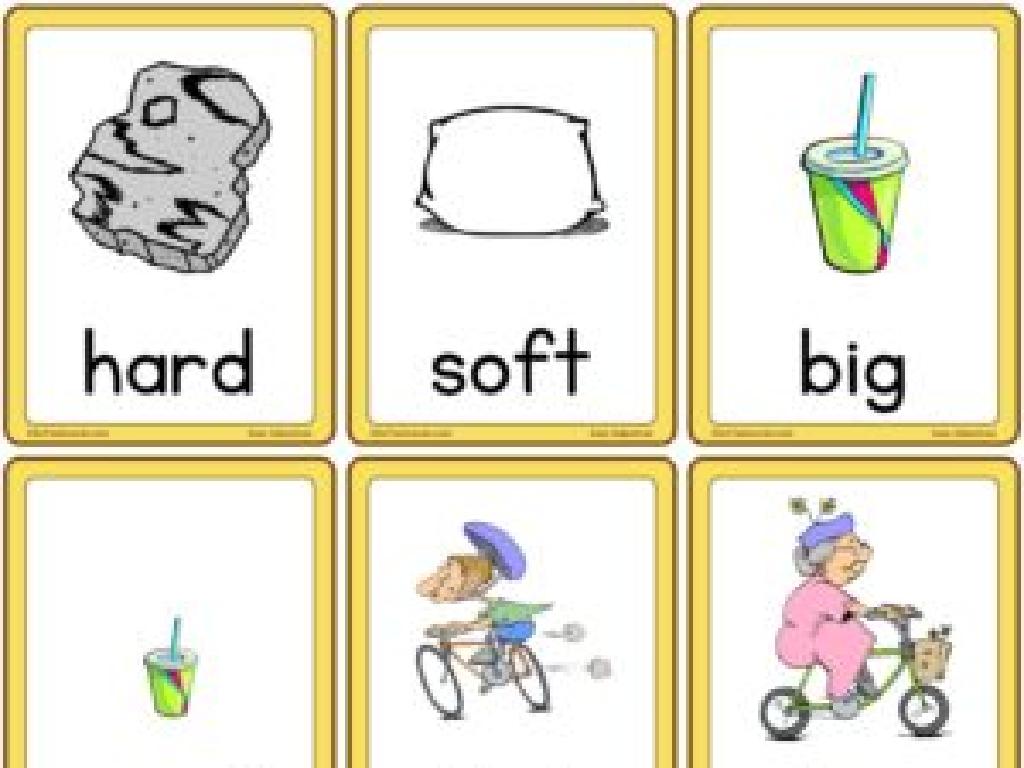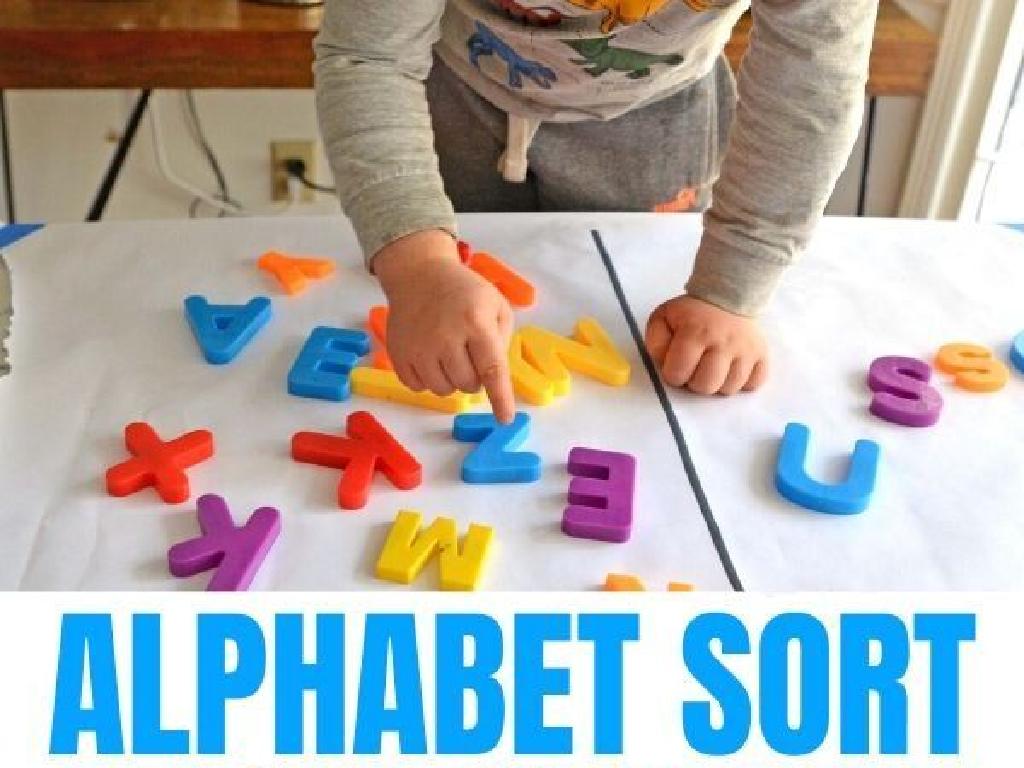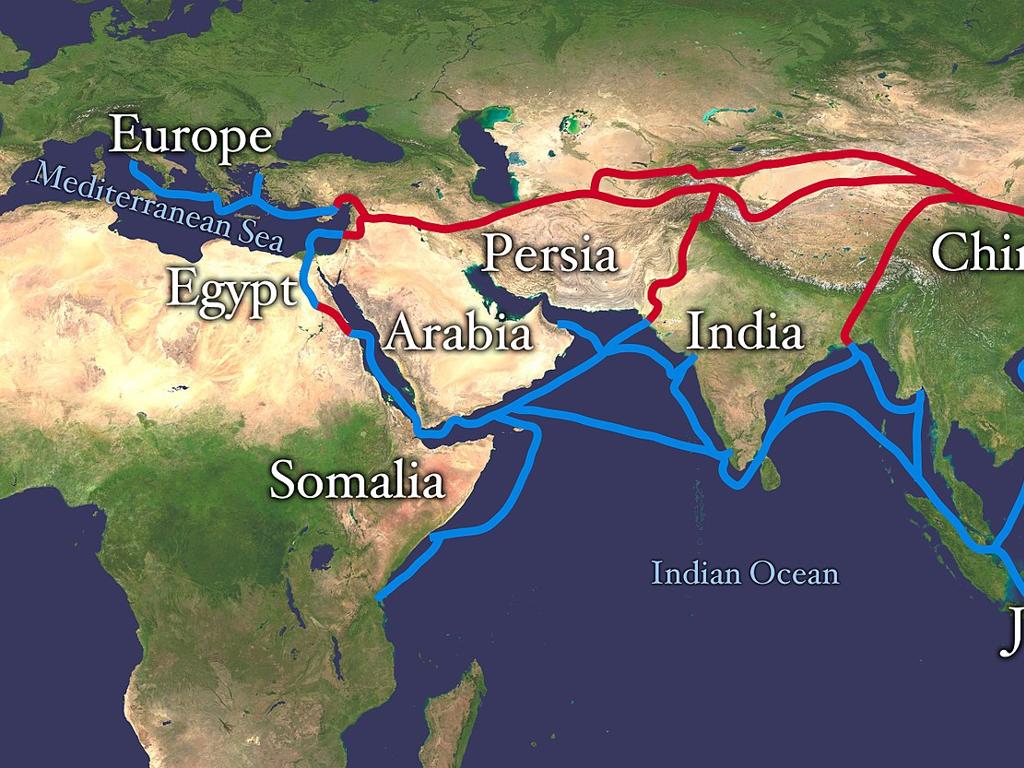Introduction To Fossils
Subject: Science
Grade: Fourth grade
Topic: Fossils
Please LOG IN to download the presentation. Access is available to registered users only.
View More Content
Welcome to the Past: Introduction to Fossils
– What are fossils?
– Fossils are remains of ancient life preserved in rock.
– Fossils as clues to the past
– They tell us what creatures lived long ago.
– Being a detective in paleontology
– Paleontologists study fossils to learn about prehistoric life.
– Why study fossils?
– Studying fossils helps us understand Earth’s history.
|
This slide introduces students to the fascinating world of fossils, the preserved remains or traces of ancient life. Begin by explaining that fossils are like natural time capsules, providing snapshots of the past. Draw parallels between paleontologists and detectives, emphasizing how both look for clues to solve mysteries. In the case of paleontologists, the mystery is what life was like on Earth millions of years ago. Encourage students to think about why understanding our planet’s history is important and how fossils play a key role in that discovery. This will set the stage for further exploration of how fossils are formed, what they can tell us, and why they are so valuable to science.
What Are Fossils?
– Fossils: Remains of ancient life
– Preserved evidence of plants and animals from a long time ago.
– Found in rocks: Bones, shells, imprints
– Can be actual body parts or just marks left in stone.
– Fossils as history books
– They tell us stories about Earth’s history and its past life.
– Exploring past creatures through fossils
– Learn about dinosaurs and other extinct animals.
|
Fossils are like nature’s time capsules; they give us a glimpse into a world millions of years old. When teaching about fossils, emphasize that they are not just old bones, but also include footprints, leaf impressions, or even evidence of animal behavior like burrows and nests. Explain that fossils are mostly found in sedimentary rocks, which are formed from particles like sand, mud, and small pebbles. Discuss how paleontologists, scientists who study fossils, use them to understand what creatures looked like, how they lived, and how they evolved over time. Encourage students to think about what we can learn from studying fossils and how this knowledge helps us understand the history of life on Earth.
Types of Fossils: Clues to the Past
– Body Fossils: Preserved remains
– Like bones, teeth, or shells of creatures
– Trace Fossils: Evidence of activity
– Like footprints, nests, or poop of ancient animals
– Each type tells a different story
– Body fossils show the organism’s structure, trace fossils show behavior
– Fossils as clues to Earth’s history
|
This slide introduces students to the two main types of fossils and their significance in understanding Earth’s history. Body fossils are actual parts of organisms, such as bones, teeth, or shells, that have been preserved over millions of years. Trace fossils are not parts of the organism’s body but are evidence of their activity, like footprints, burrows, or even droppings. Each type of fossil provides different clues about what life was like in the past. Body fossils can tell us what an organism looked like, while trace fossils can give us insights into how an organism behaved, where it lived, and what its environment was like. Encourage students to think about what stories these fossils could tell us about life on Earth long ago.
How Are Fossils Formed?
– Fossils: preserved remains of living things
– Formation begins with burial by sediment
– Sediment covers the organism after it dies
– Sediment turns to rock, encasing the organism
– Over time, layers build up and harden around it
– The fossilization process spans eons
– It can take millennia for fossils to fully form
|
This slide introduces the concept of fossil formation to fourth-grade students. Begin by explaining what fossils are: the preserved remains or traces of animals, plants, and other organisms from the remote past. Emphasize that the process starts when an organism dies and gets buried under sediments like mud, sand, or silt. Over time, these sediments harden into rock and preserve the shape of the organisms. Highlight the vast timescales involved in this process, ranging from thousands to millions of years, which can be a challenging but fascinating concept for young students to grasp. Use diagrams or pictures of fossils in sedimentary rock layers to visually aid the explanation. Encourage questions and curiosity about how different types of fossils are formed and what they can tell us about the history of life on Earth.
Fossil Hunters: Meet the Paleontologists
– Paleontologists: Fossil scientists
– Experts who study ancient life through fossils
– Tools they use: Brushes, chisels
– Delicate tools for excavating without damage
– Global fossil exploration
– They travel worldwide for new discoveries
– Uncovering the past
|
Paleontologists are like detectives of the Earth’s history, studying fossils to understand ancient life. They use specific tools such as brushes and chisels to carefully excavate fossils from the ground without harming them. Their work takes them to various locations around the globe, searching for new fossil sites that can reveal more about our planet’s past. This slide aims to introduce students to the exciting work of paleontologists and inspire curiosity about historical life forms and the methods used to study them. Encourage students to ask questions about what kind of environments paleontologists might work in and what discoveries they have made.
Why Study Fossils?
– Fossils as Earth’s history book
– Fossils are like pages in a book, telling us stories of the Earth’s past.
– Life’s changes over time
– They show the evolution of plants and animals through different eras.
– Fossils indicate past climates
– By studying fossils, we can infer if an area was once underwater or a tropical forest!
– Understanding our planet’s past
|
Fossils are incredibly important for understanding the history of our planet. They act as a record of Earth’s past, showing us how life has evolved and adapted over millions of years. By studying fossils, scientists can piece together the appearance and habits of extinct species. Additionally, fossils provide clues about the Earth’s climate throughout history, such as whether an area was once covered by ocean or was a dry desert. Encouraging students to think of fossils as storytellers can spark their interest in paleontology and Earth science. Discuss how each fossil contributes to the big picture of Earth’s history and our place within it.
Your Turn: Be a Paleontologist!
– Class Activity: Fossil Excavation
– Create a classroom ‘dig site’
– Carefully uncover ‘fossils’ with tools
– Use brushes and picks like real paleontologists
– Identify the ‘fossils’ you find
– Compare your findings with pictures of real fossils
|
This slide introduces a hands-on class activity where students will simulate the role of paleontologists by participating in a mock ‘fossil excavation.’ Set up a small area in the classroom with buried ‘fossils’ made from plaster or hidden within layers of sedimentary material. Provide students with tools such as brushes, picks, and magnifying glasses to carefully excavate and uncover these items. Once they have found their ‘fossils,’ guide them to use resources like books or posters to identify what type of organism the fossil might have come from. This activity is designed to engage students in the scientific process, encourage teamwork, and foster a deeper understanding of how fossils are discovered and studied. Possible variations of the activity could include different ‘dig sites’ for groups of students, each with varying types of ‘fossils’ to find and identify, or even the creation of their own ‘fossils’ using clay or similar materials prior to the excavation.
Fossils: Unearthing the Past
– Recap of today’s fossil facts
– Significance of fossils
– Fossils show us life’s history & Earth’s changes
– Encourage questions
– There are no silly questions, only new discoveries!
– Keep exploring at home
– Look for patterns in nature that remind you of fossils
|
As we conclude today’s lesson on fossils, it’s important to summarize the key points we’ve covered. Emphasize the role fossils play in understanding the history of life and the changes our planet has undergone. Highlight how fossils can tell us about the plants and animals that lived millions of years ago. Encourage students to ask any questions they have, reassuring them that curiosity is the heart of science. Finally, inspire them to continue their learning outside of the classroom by observing the natural world around them and considering how it might connect to what they’ve learned about fossils.





